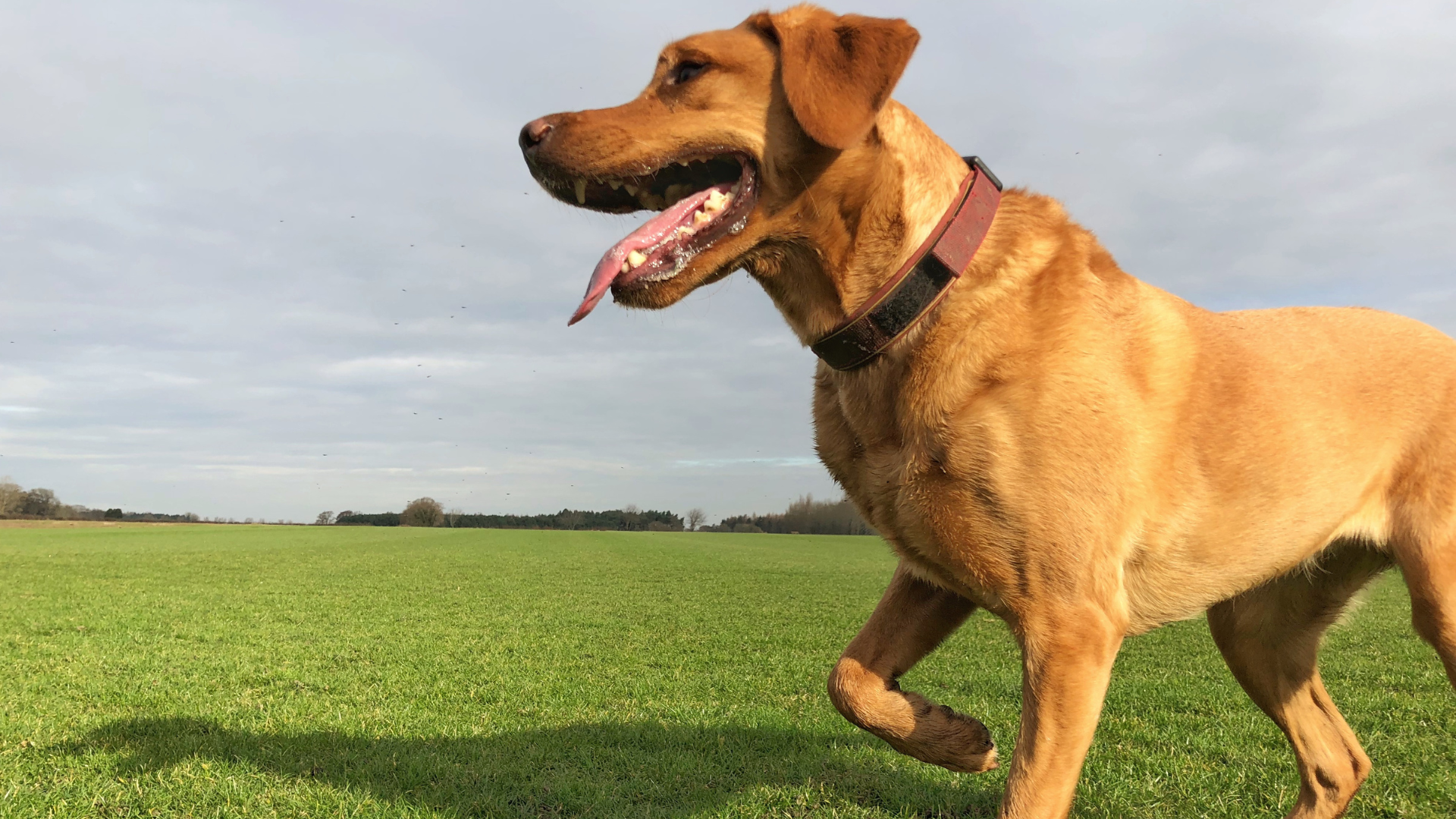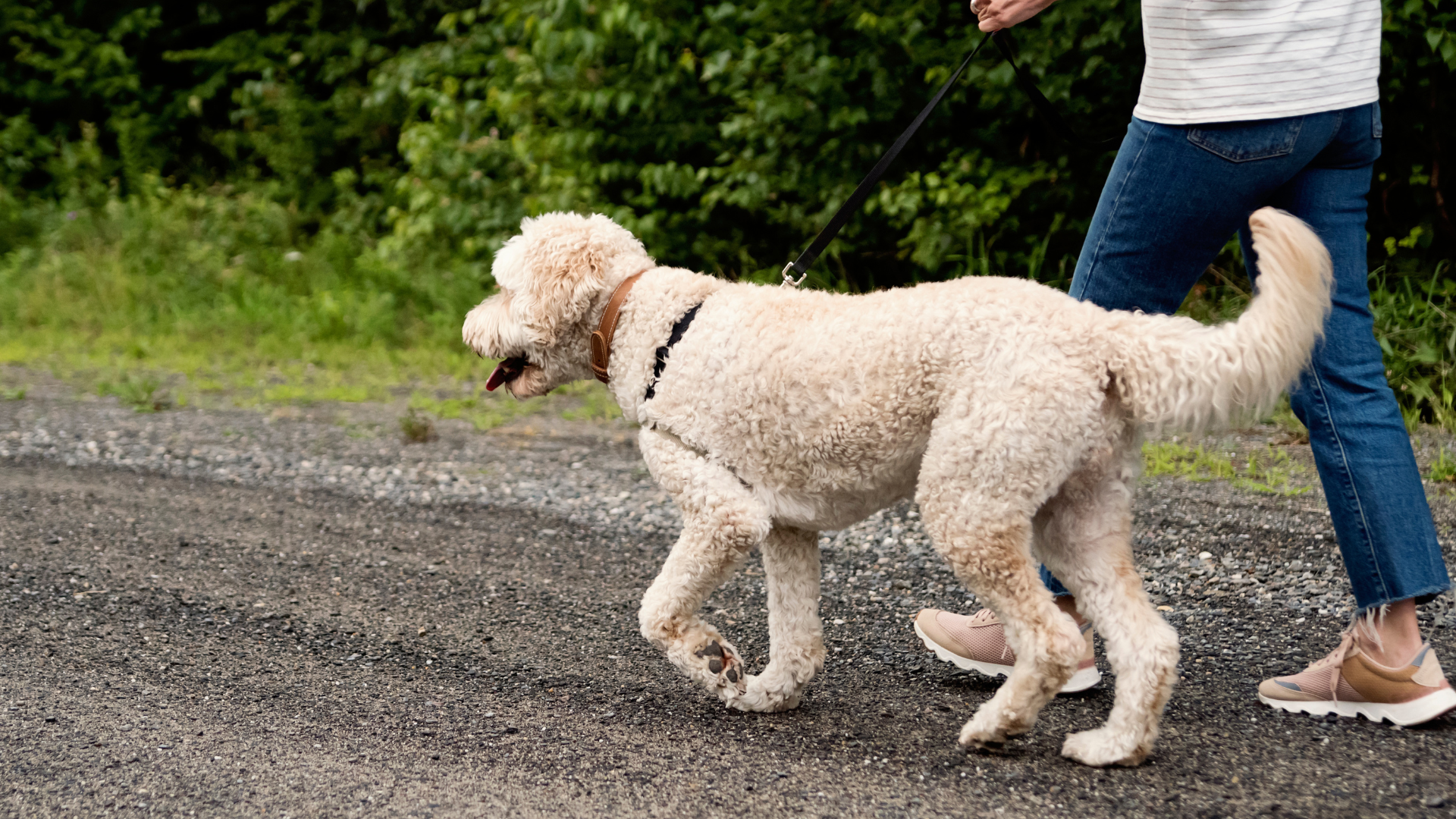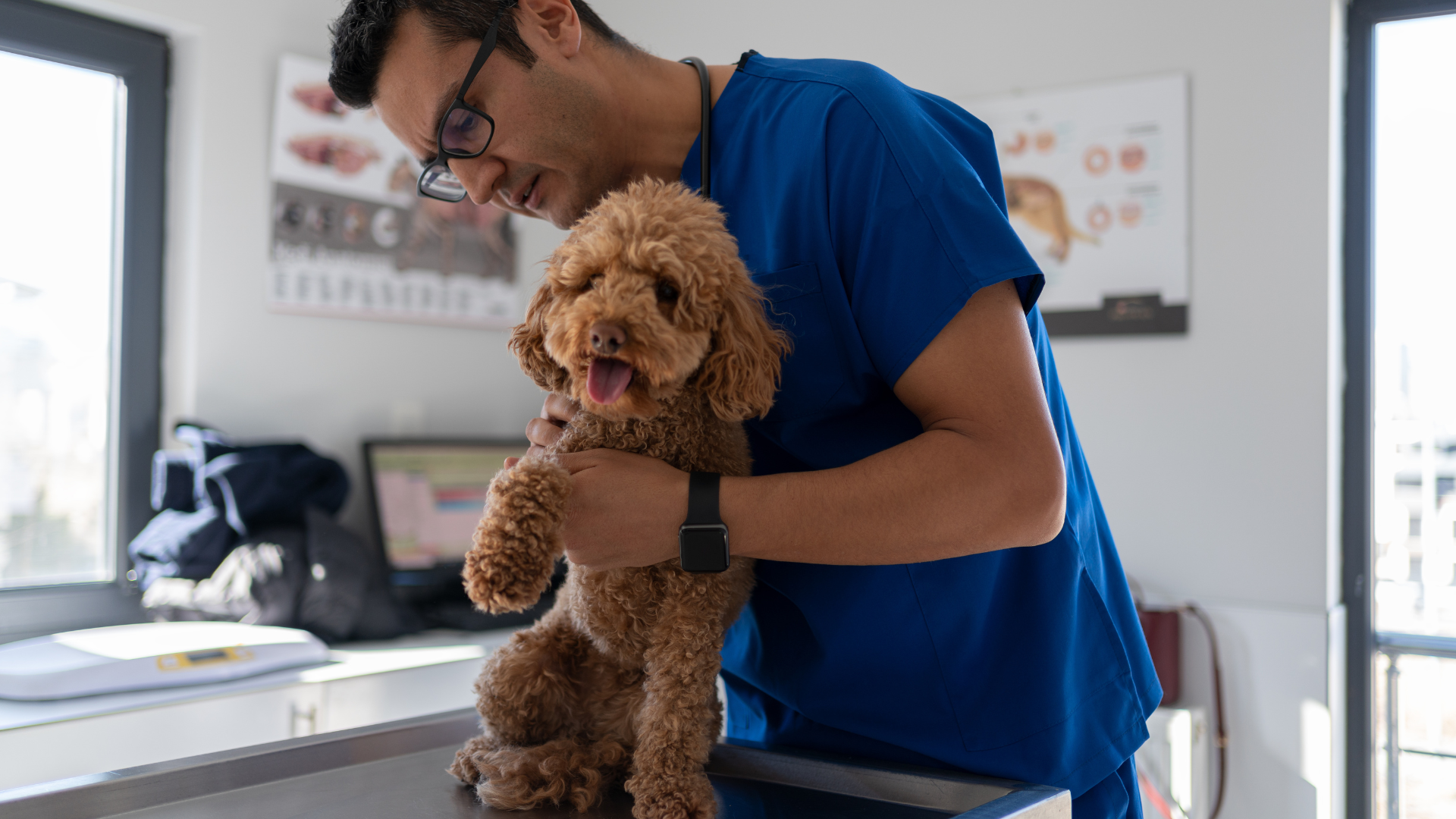
A luxating patella in dogs is a fairly common orthopedic disease. But what do we mean by a luxating patella? And what does it mean for your dog if they have it?
I’ve been a vet for eight years and I’ve worked alongside specialists at two orthopedic clinics, so I’ve seen my fair share of luxating patellas. I also have a terrier, Pixie, who has patella problems but thankfully hasn’t needed surgery yet. I’ve just taken precautions to keep her as comfortable as possible (like getting her on the best joint supplement for dogs) and I’ll keep monitoring her for signs her patella needs operating on.
I know a fair bit about luxating patellas in dogs, but if your dog has just been diagnosed you’re probably feeling a bit confused. So, I’m going to explain luxating patella in dogs and make it easy to understand – here we go!
What is luxating patella in dogs?
‘Luxating’ means dislocating, and ‘patella’ is the kneecap, so a ‘luxating patella’ means a dislocating kneecap. As in humans, your dog’s kneecap is a bone that sits on the front of their knee. It actually sits inside a tendon that goes from the thigh bone over the top of the knee joint to the shin bone. When your dog’s knee bends, the patella runs up and down a smooth groove at the end of the thigh bone. This is an important part of the knee’s straightening function.
A dog with a luxating patella has a patella that sometimes pops out of the groove, ‘locking’ the knee and causing pain or instability. This happens because the groove is too shallow, the tendon is too loose, or the angle of the legs isn’t right, putting sideways tension on the patella tendon.
The kneecap ‘pops’ out to one side while the dog is using the leg, causing luxating patella symptoms. In about 90% of cases, the patella pops out to the middle of the leg (a ‘medial’ patella luxation or ‘MPL’) but sometimes (especially in larger breeds), it pops to the outside of the leg – a ‘lateral’ patella luxation or LPL.

What are the symptoms of luxating patella in dogs?
Luxating patella in dogs causes a very classic limp that all vets recognize. Dogs with a luxating patella will be using their limb normally, then they’ll start hopping, holding the problematic knee up. After a few hops, the patella pops back in and they’ll often walk completely normally again. The more severe the problem, the more frequently their patella pops out.
Untreated, a luxating patella can cause arthritis so you might also see other symptoms like stiffness, reluctance to use stairs, or licking the knee joints. These are all signs a dog is in pain.
What causes luxating patella in dogs?
Luxating patella is generally thought to be a genetic condition. It’s more common in some breeds of dog, such as the Pomeranian, Chihuahua,and Yorkshire terrier, which have a five to six times higher chance of getting patella problems. Females are also more likely to get a luxating patella than males.
However, alongside genetics, it’s likely that early life experiences are related. Neutering may have a part to play, as neutered dogs are more likely to get a luxating patella, possibly due to delayed growth plate closure in dogs neutered before puberty. Exercise as they’re growing may also have an impact, and obesity is likely to play a part, too. Nutritional imbalance caused by a poor diet may also contribute to abnormal bone growth and patella weakness.
In other words, it’s not possible to completely prevent luxating patellas in dogs. But if you are buying a small-breed dog, ask about the parents’ patella history. Make sure the puppy has the right kind of diet and exercise to help their legs grow strong, and ask your vet about the benefits and risks of neutering at different ages for your dog’s breed and lifestyle to make an informed decision.

How do you treat a dog with a luxating patella?
If you suspect a luxating patella, it’s a good idea to get your dog examined by the vet. They’ll feel your dog’s knee and give the patella luxation a ‘grade’, which says how bad it is.
- Grade 1: Patella is mostly in place but can be forced out by a vet
- Grade 2: Patella occasionally dislocates by itself, but usually returns by itself
- Grade 3: Patella is permanently dislocated. It can be pushed back into place but springs back on its own
- Grade 4: Patella is permanently dislocated and impossible to replace
Depending on the grade, your dog’s symptoms, and the results of x-rays, your vet will advise whether the luxating patella needs treating. Luxating patella treatment involves surgery, which is often done by specialist orthopedic vets at referral practices. There are several techniques to help patella luxation in dogs, and your orthopedic vet might recommend:
- Deepening the groove in the thigh bone
- Cutting and repositioning the shin bone to pull the patella tendon tighter
- Cutting and repositioning other bones if they are very deformed
- Stitching the joint capsule tighter to reduce space for sideways movement
Pixie has a grade 2 patella, but it’s very mild and she hasn’t got classic x-ray results, so it makes it hard to know if surgery will help. Her vet recommended I don’t do surgery yet, but that she might need it in the future. He thinks there’s a high chance she’ll rupture her cruciate at some point, so it makes sense to do both operations at once if/when that happens.

How long can a dog live with a luxating patella?
A luxating patella isn’t fatal on its own, and dogs can live a full life with a mild luxating patella. Arthritis is a natural consequence of a luxating patella, and can cause dogs to be very painful, which may require euthanasia. When the patella luxation is more serious, dogs need surgery, and if that surgery can’t be performed then euthanasia may be needed. Even with surgery, it’s likely dogs will get early-onset arthritis and, again, keeping them comfortable can be difficult. But, overall, a luxating patella is not a life-limiting condition, and as long as they’re able to be kept comfortable, dogs can live into their old age with a luxating patella.
A luxating patella in dogs sounds complex, but it’s just a dislocating kneecap. Instead of smoothly moving up and down, the kneecap pops out of the groove it should sit in, causing pain and a classic limp. In some cases, it pops out so frequently that surgery is needed. In time, even with surgery, the knee is likely to become arthritic, which can compromise your dog’s welfare. If you think your dog has a luxating patella, talk to your vet who will help you understand your dog’s knee problems and whether they need surgery.







